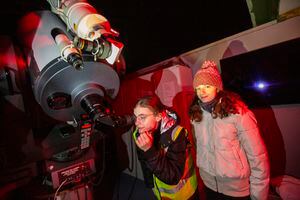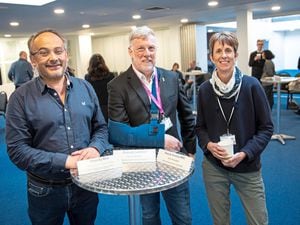Ladies’ College Year 7s enjoy clear view from observatory
A BREAK from recent cloud coverage allowed a group of local students to examine the night sky in detail while learning important information about the universe.

Ladies College Year 7s took a trip to the La Societe Guernesiaise Astronomy section’s observatory, rebuilt and reopened in August 2022, which is home to a Meade 16’ Schmidt-Cassegrain and a purpose-built rolling roof.
The school had regularly taken groups to the observatory before, though this was the first after a two-year break, and the students were eager to build on what they had learnt in the classroom.
‘We have been teaching astronomy as one of our two remove physics topics, and a visit to the observatory on a dark winter’s night at the beginning of that unit of work really brings the curriculum alive, especially if the weather is clear enough for the students to observe some celestial bodies,’ said Year 7 science teacher David Herschel.
Using the permanently mounted Meade telescope, the group was able to see stars such as Betelgeuse, which is the brightest in the sky, the blue supergiant Rigel, and observe the clouds of gas surrounding Orion’s Nebula.
The students also listened to lectures from Societe members Owain Catton, Jason Hill and Peter Langford, to gain a better understanding of the wide world of cosmology.
‘I loved learning about the Hertzsprung-Russell diagram, which shows the patterns of all the different stars, and their sizes and temperatures,’ said 11-year-old Renee Mitchell.
‘We learnt a lot of new terminology to do with the universe, and discussed some ideas that are at the forefront of scientific understanding,’ she said.
As well as observing the array of stars from the observatory, the students were able to see the recently-discovered green comet C/2022 E3 (ZTF). It has been making its closest approach to earth in 50,000 years this month, which is still about 26m. miles away from earth.
‘There is so much out there we don’t know about, scientists are always finding new things in space,’ said Holly Lavin, 12.





